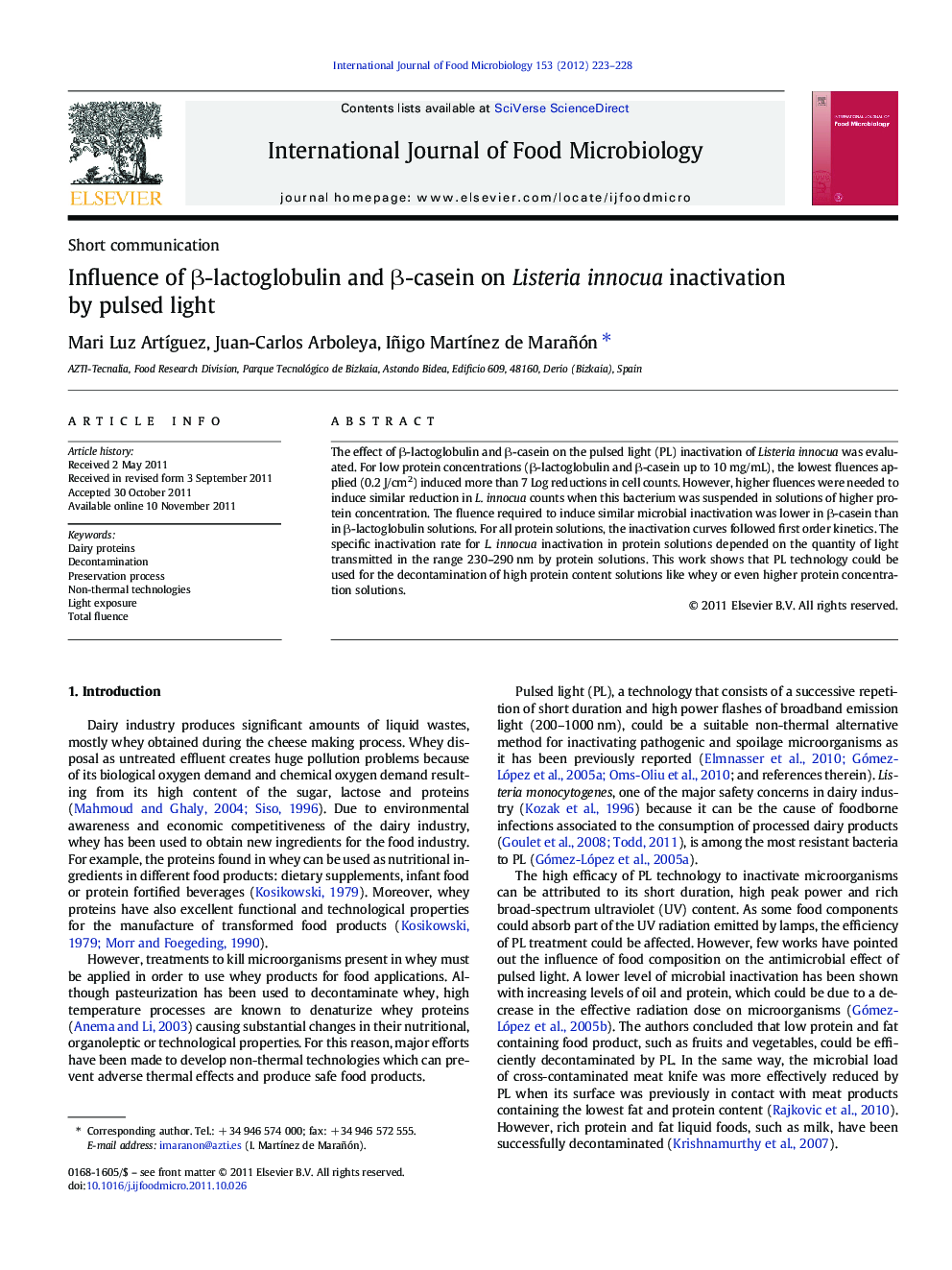| Article ID | Journal | Published Year | Pages | File Type |
|---|---|---|---|---|
| 4367844 | International Journal of Food Microbiology | 2012 | 6 Pages |
The effect of β-lactoglobulin and β-casein on the pulsed light (PL) inactivation of Listeria innocua was evaluated. For low protein concentrations (β-lactoglobulin and β-casein up to 10 mg/mL), the lowest fluences applied (0.2 J/cm2) induced more than 7 Log reductions in cell counts. However, higher fluences were needed to induce similar reduction in L. innocua counts when this bacterium was suspended in solutions of higher protein concentration. The fluence required to induce similar microbial inactivation was lower in β-casein than in β-lactoglobulin solutions. For all protein solutions, the inactivation curves followed first order kinetics. The specific inactivation rate for L. innocua inactivation in protein solutions depended on the quantity of light transmitted in the range 230–290 nm by protein solutions. This work shows that PL technology could be used for the decontamination of high protein content solutions like whey or even higher protein concentration solutions.
► PL process is an effective method to decontaminate high protein content solutions. ► Microbial inactivation is affected by the protein concentration of the solution. ► PL treatment efficacy depends on the quantity of light transmitted in the UV range.
